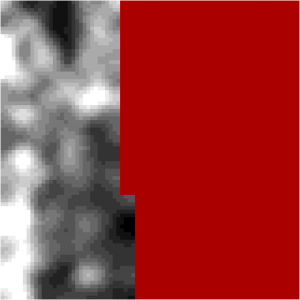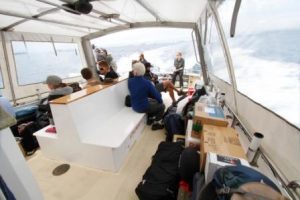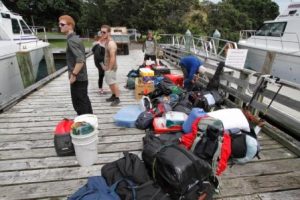Today we opened a test pit (a 1x1m hole) in a new excavation area. It was a place that was selected near the beach for its unnatural flat plateau, and was run with the geophysical survey a couple of days ago. There were some places on the plateau that came out as anomalous on the survey, and our new test pit was one of them.
We began by finding the interesting point on the plateau, and putting pegs in the four corners of our test unit. Rebecca was on the dig team with me, and together we de-turfed the square (digging out all the grass!) and began digging. We dug slowly, making sure that if there was anything interesting in the excavation that we didn’t break it. It turned out that today was our lucky day, and we found heaps of artefacts. Right after the grass came off, the floodgates opened, and we found big basalt flakes, obsidian flakes and chert. We had barely been digging for 10 minutes before we had to stop and catalogue all of our finds. The theodolite team (the ones who survey and map out the area) came over and used their technology to map where the artefacts were found in the hole. This made our progress slow, since they had to come running over so often!
Layer 1 was relatively small, and only went 10cm deep. Even so, we found so many great artefacts it took all morning to get down that far. Overall we had some amazing obsidian, chert and basalt, as well as shell and charcoal. By then it was lunch time and we went in to eat.
The afternoon weather was tough as it rained quite a bit, and quite often. Thankfully we put up canopies over the excavation areas, and we were sheltered. From then onwards we made rapid progress down through layer 2, since it didn’t have many artefacts and the sand was much easier to dig through. There were some interesting finds anyway, and by the end of the day we had a firescoop, a post hole and an interesting large rock. The firescoop was shallow in the second layer, and is where charcoal after an ancient fire was swept after it had been put out. It came out as a lense of black charcoal in the orange-brown sand. The large rock was found mid-way down the second layer and had a flat base and a rounded top. It was right in the middle of the pit and for a time we had to excavate around it. The tutor, Alex, examined it for rock art or special significance, but couldn’t find any. Finally the post hole was found late in the day, and took us all by surprise. It was where an ancient post was placed in the ground and was later in-filled with different dirt than what would naturally be there. As Rebecca and I were smoothing the edges of the wall of the hole, Rebecca said: “Hey Alex, I think that’s a post hole!” … and we all came running. It was a genuine post hole, and only the second one of the whole trip. We were very happy and quickly took photos. We then dug down the hole removing the fill with a spoon until we found the bottom of it. It was a great end of the day. Hopefully tomorrow will be equally as exciting.
– Laura















